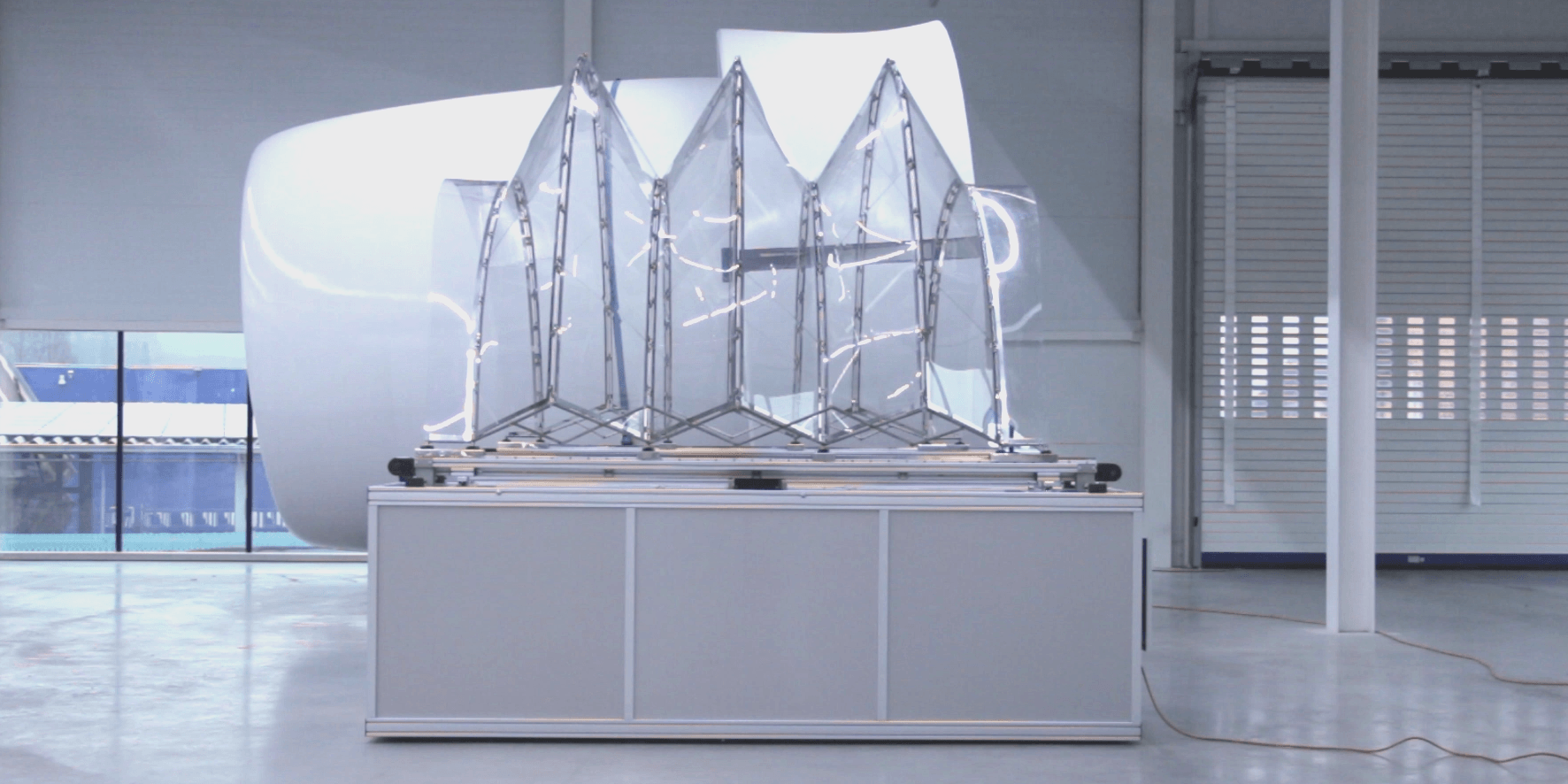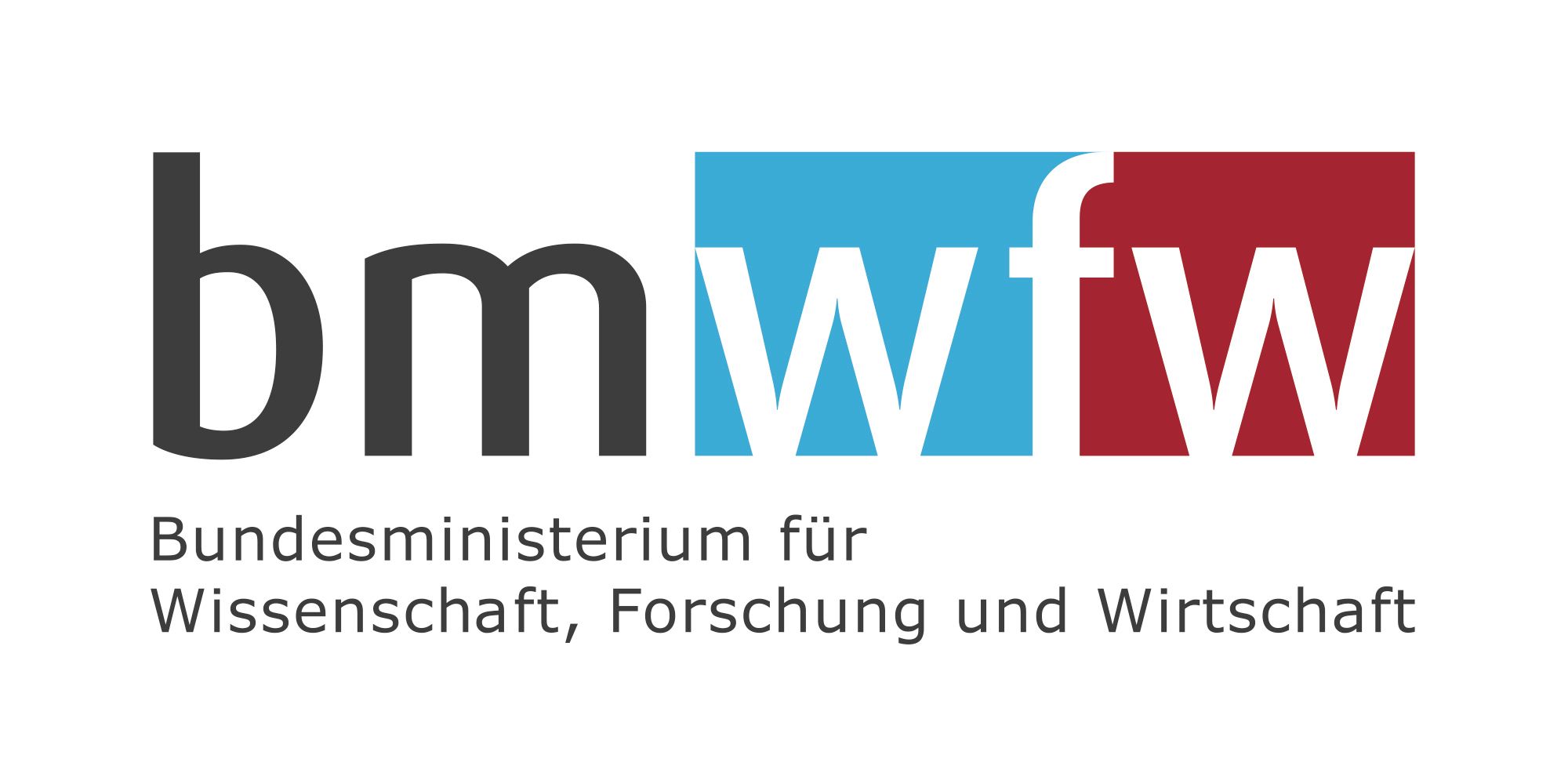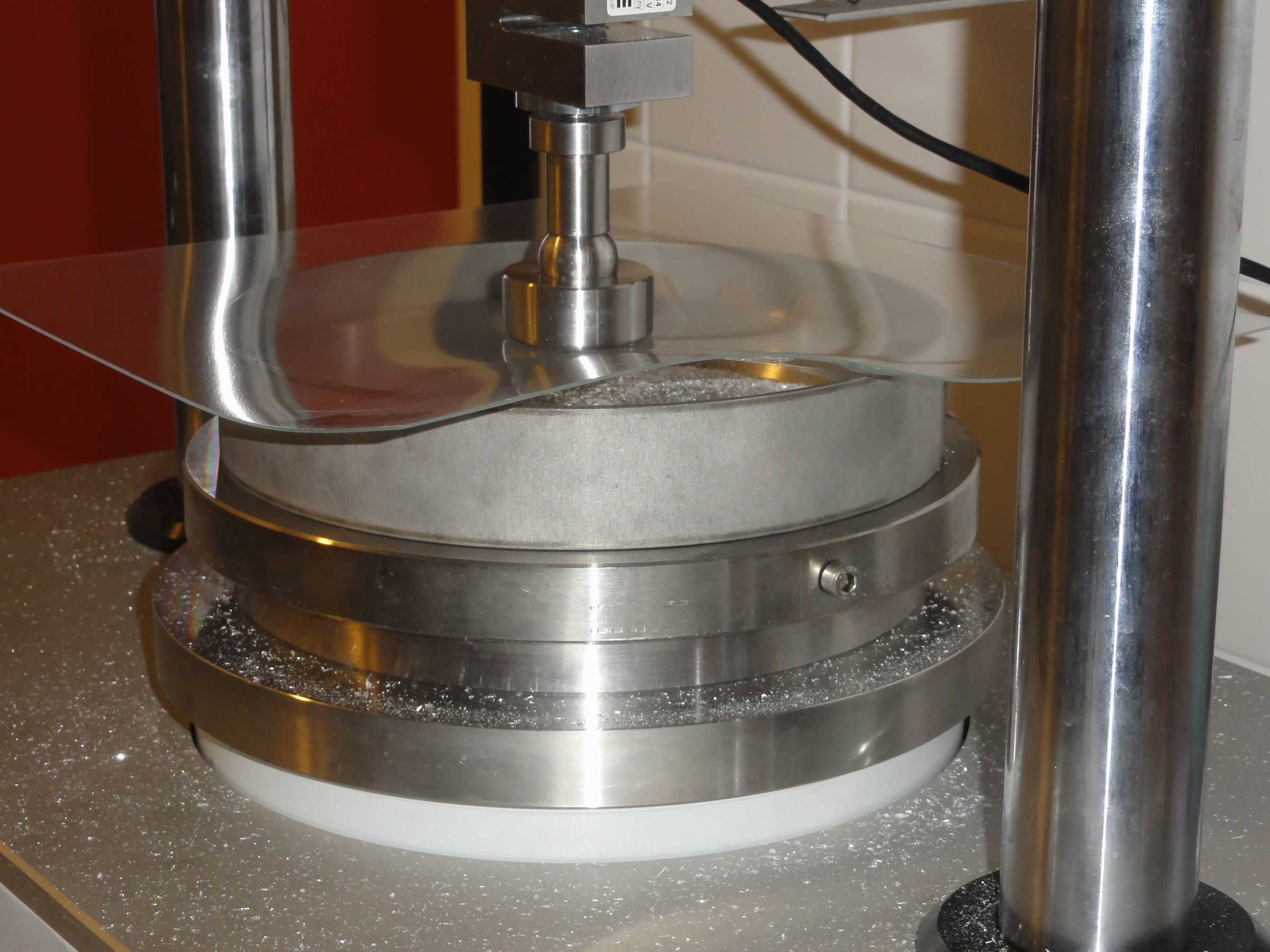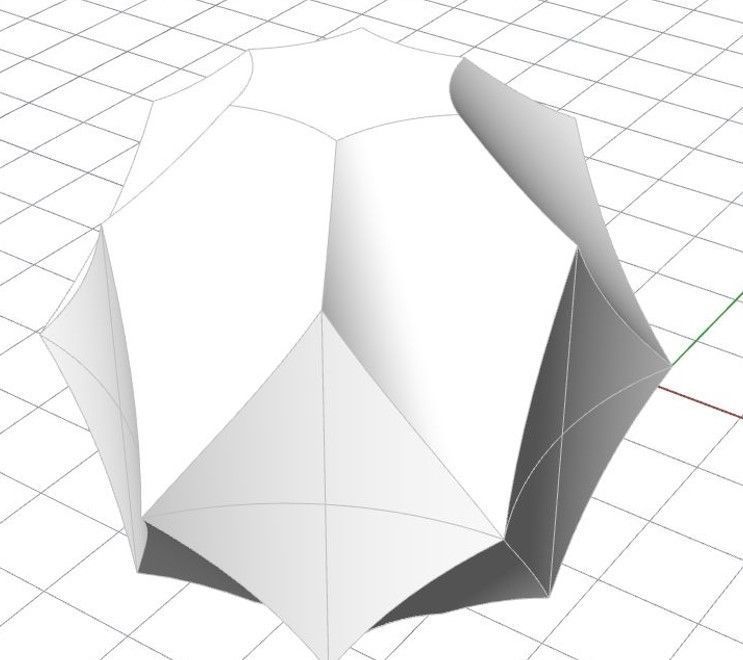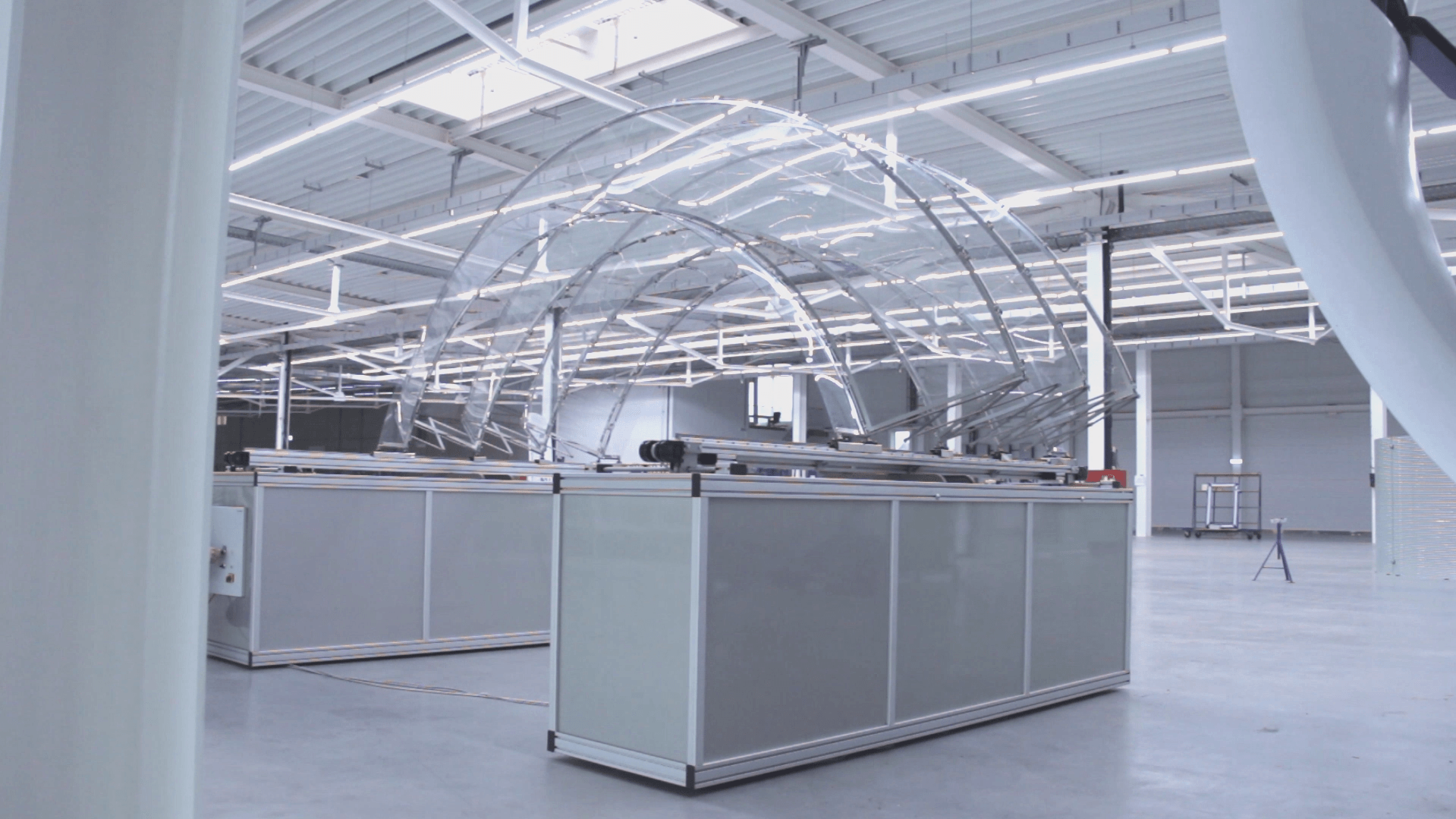Investigating bending tensile strength
Where thin glass is used as a load-bearing structure, evidence is required that its bending tensile strength meets approved standards. In the literature the theoretical strength of glass is around 10,000 MPa. The actual measured bending tensile strength of non-tempered glass lies in the order of around 80 MPa. The enormous difference between the theoretical and actually achievable values can be attributed, amongst others, to defects on the surface or in the glass matrix itself.
Test series are required to identify and evaluate these key influential factors and to derive correlations for indicators of load-bearing capacity. However, established testing procedures for conventional glass cannot be applied to thin glass, and so these procedures must be adapted correspondingly or new ones developed.
Determining the shear modulus
In most cases safety specifications demand the use of laminated safety glass; this consists of at least two layers of glass, each separated by a sheet of synthetic material. Various types of synthetic film are available on the market. Tests will be undertaken to evaluate the mechanical characteristics of a variety of films of different compositions, and their bonding behaviour with glass. The advantages and disadvantages will be investigated in order to determine their suitability.








